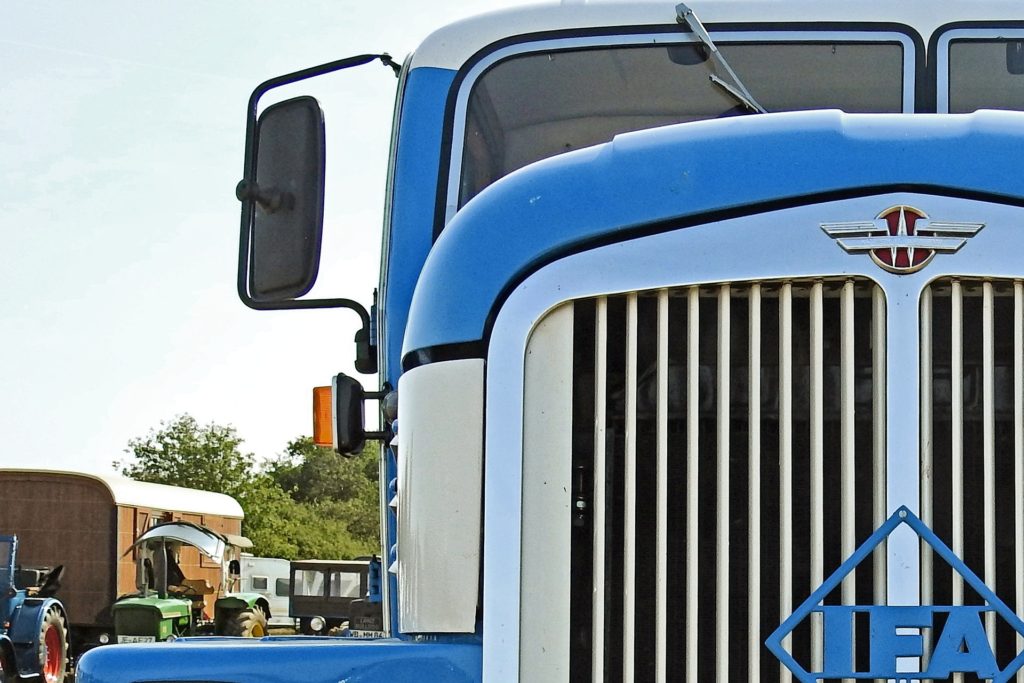A Complete Guide to Truck Blind Spots

A blind spot is an area immediately surrounding a vehicle that cannot be observed by a driver in the normal field of vision, including the rear view and side mirrors. Large commercial trucks have large blind spots around the front, sides, and back of the vehicle. If you cannot see the driver in the truck’s side mirror, you can safely assume the driver cannot see you.
Why Are Blind Spots Around Large Trucks So Big?
Big rigs have larger blind spots than passenger vehicles because of their length and height. Semi-trucks can be 70 to 80 feet long, and more than 100 feet long with triple trailers. Truckers are much higher off the ground than passenger vehicle drivers. This makes it difficult for them to see vehicles lower to the ground directly in front of them or next to them.
Where Are Truckers’ Blind Spots Located?
Semi-trucks have large blind spots on all four sides known as “no zones”:
- Front no zone: This blind spot is immediately in front of the cab, extending out approximately 20 feet.
- Left no zone: Although substantial, the blind spot on the left side of a truck is smaller than the one on the right. Beginning just behind the driver’s window, it extends backwards at an angle that spans up to two lanes of traffic.
- Right no zone: A truck’s blind spot on the right begins just behind the right side of the cab and extends backward at an angle, spanning up to three lanes. This is the largest and one of the most dangerous truck no zones.
- Rear no zone: There is no rear-view mirror in the cab of a semi-truck. The rear blind spot is located immediately behind the truck’s trailer and can extend as far as 30 feet.
How Do Truck Blind Spot Crashes Happen?
In addition to large blind spots, big rigs have limited maneuverability and longer stopping distances. Different types of collisions can occur when a trucker fails to see a vehicle in a truck’s blind spot. The driver may:
- Rear-end a car in the front no zone
- Sideswipe a vehicle in the left no zone while changing lanes to the left or merging into traffic
- Slam into vehicles in the right no zone while moving over to the right lane
- Stop or slow down suddenly, causing a vehicle in the rear no zone to collide with the rear of the truck
What Types of Injuries Are Caused By Truck Blind Spot Crashes?
Because of their sheer size and weight, semi-trucks can cause severe or fatal injuries when they collide with passenger vehicles. Common injuries in truck blind spot collisions include:
- Head trauma and brain injuries
- Back and spinal injuries
- Spinal cord damage and paralysis
- Fractured bones
- Internal organ damage and bleeding
- Crush injuries and amputations
- Whiplash and neck injuries
- Severe burns from fires or explosions
What Types of Compensation May Be Available for a Truck Blind Spot Crash?
Truckers have a duty to operate big rigs carefully to prevent harm to others on the road. They are held to an even higher standard than passenger vehicle drivers because of the damage these large, heavy vehicles can cause in a collision. If you have been injured in an Omaha truck blind spot crash, you may be entitled to recover compensation for your injuries. Common damages in truck crash claims include past and future medical expenses, lost earnings, loss of future earning potential, scarring and disfigurement, pain and suffering, emotional distress, and loss of enjoyment of life.
Our experienced Omaha truck accident attorney can help maximize your potential claim. Contact Bottlinger Law L.L.C. at (402) 505-8234 to schedule a free consultation.
Bottlinger Law
Consultation Form
Our legal team is ready to help. Please fill out the form below to set up a free consultation with the Bottlinger Law team.